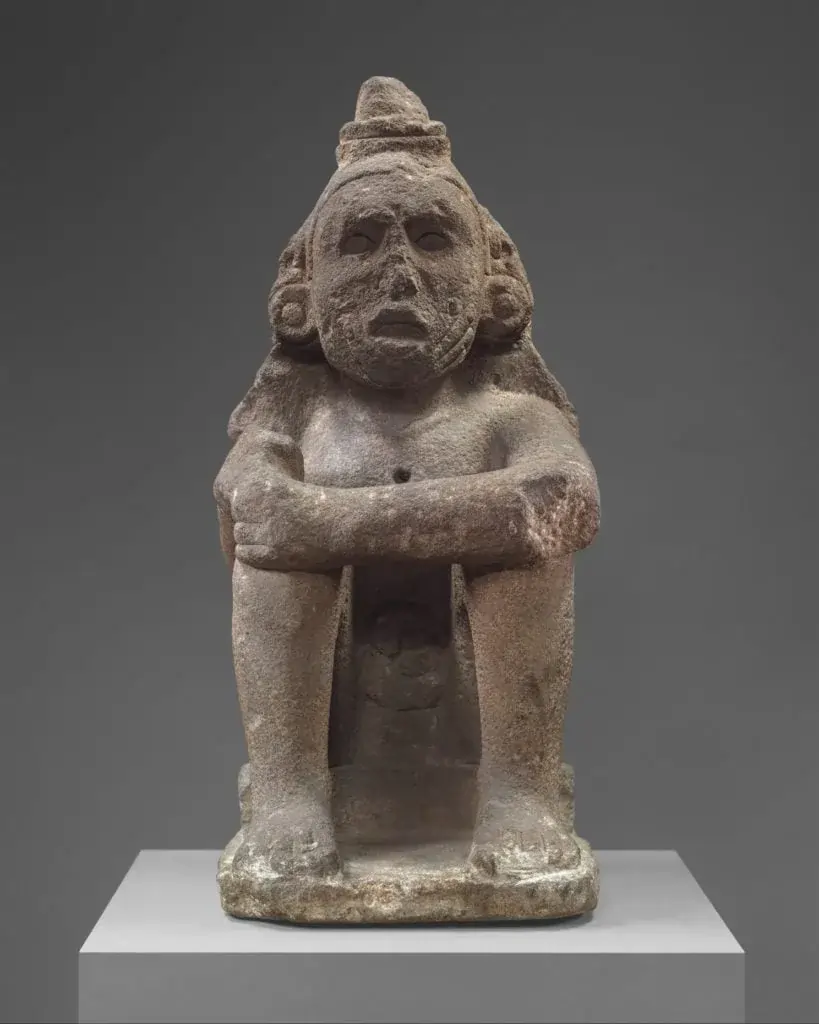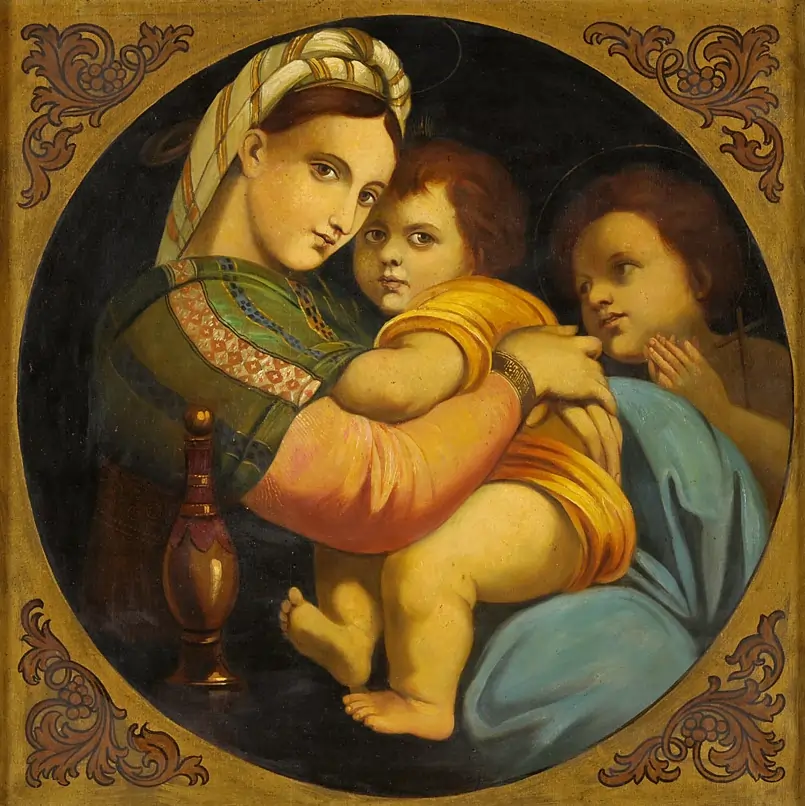The art of the civilization is highly impressive. Reflects their deep religious beliefs and social organization, through skilled stone craftsmanship. They crafted sculptures and detailed carvings that had cultural and educational significance within their community. These creations varied from stone calendars to depictions of gods and goddesses speaking volumes about their exceptional skills, in artistry.
The Aztec’s had a tradition of sculpting that covered a range of subjects and methods. From portraying their sun god Tonatiuh to depicting warriors symbolizing their strength, in battle. The sculptures were crafted from materials such as basalt and volcanic stone with expertise. Using specific tools to capture their unique characteristics. This piece delves into the methods used by the Aztecs in sculpting these artworks along with the significance, behind them and highlights the most notable sculptures that have endured through time.
The Legacy of Olmec Sculpture
The Olmec civilization thrived between 1200 BCE and 400 BCE and laid the groundwork for traditions that shaped Mesoamerican societies, like the Aztecs through their skill, in stone carving and monumental sculpture.
Similarities between Olmec and Aztec art
Both the Olmec and Aztec civilizations were highly skilled, at crafting statues of humans and gods in three dimensions. They both shared an approach to depicting figures and symbols of religious significance in their artistry. While the Aztecs concentrated on representing deities the Olmec’s mainly showcased leaders and influential political figures, in their creations.
Colossal heads and their significance
The Olmec colossal heads represent one of their most significant artistic achievements. These monuments possess several distinctive characteristics:
- Dimensions and scale: Heights ranging from 1.17 to 3.4 meters
- Material composition: Carved from basalt boulders
- Transportation feat: Moved over 150 kilometers from source
- Individual features: Each head displays unique facial characteristics
- Cultural significance: Believed to represent powerful rulers
Three-dimensional sculptures
The impressive skill displayed in the art of three stone carving is an accomplishment, in the histories of both cultures mentioned above. Monument 77 at La Venta is famously known as “The Scribe” showcasing the Olmec people’s ability to convey emotions and strength through stone sculptures. Similarly noteworthy is the Aztec sculpture of Xochipilli which demonstrates a level of expertise in portraying the figure with great accuracy and intricate detail. Both civilizations excelled in crafting sculptures designed to be admired from every angle—an indication of their mastery, in awareness and artistic craftsmanship.
The sculptors mainly focused on sculpting basalt using methods to carve and refine these durable stones with precision and care.
Aztec Stone Carving Techniques
The impressive stone carving skills of Aztec craftsmen showcase their creativity in crafting intricate sculptures using traditional methods rather, than metal tools showcasing a legacy of expertise passed down through generations.
Tools and materials used
Aztec sculptors utilized a diverse array of specialized tools crafted from naturally occurring materials. Their primary implements included:
- Obsidian blades for detailed carving and fine work
- Chert and quartzite picks for initial shaping
- Stone hammers for breaking larger pieces
- Bone and stone chisels in various sizes
- Abrasive materials like sand for finishing
Carving process and skills
Crafting Aztec sculptures was a process that comprised several stages of intricate craftsmanship workmanship from skilled artisans, in the thriving community of Aztec civilization. They kicked off the journey through a method known as pecking. Diligently striking the stone surface with precision to carve out materials systematically. Lay the foundation for shaping with finesse. This crucial stage demanded an understanding of stone characteristics and expert control to transform material into refined artistry. Once the initial shaping was complete the craftsmen delved into techniques, such, as grinding and meticulously abrasing with sand and water to achieve impeccably smooth surfaces that would bring their creations to life.
Challenges of working with hard stone
Sculptors of the civilization faced challenges when working with materials, like basalt and andesite stones. Carving these stones put a lot of pressure on the artisans bodies. Often left them exhausted or injured. Finding the kind of stones was also a task since they weren’t always nearby forcing sculptors to travel long distances to get them. This not ate up time. Also drained their energy for the actual carving work.
Stone carving was a craft where errors were permanent once material was carved away emphasizing the need, for honed skills gained over years of training and dedication to perfection in craftsmanship and creativity envisioning the masterpiece, within the solid stone block.
Symbolism and Themes in Aztec Sculpture
Symbolism was present, in every part of art and showcased a profound worldview that linked the divine world to daily life on Earth. The intricate stone carvings crafted by the Aztec’s were more, than artworks; they embodied the cultural beliefs of their civilization by embedding profound meanings within their detailed designs.
Depictions of deities and supernatural beings
The portrayal of deities was central, to Aztec practices with Tonatiuh taking a role in different artworks including the Sun Stone where his face is depicted with an open mouth and protruding tongue as a symbol of the requirement for sacrificial offerings for sustenance. The Āhuiyatēteoh were illustrated with characteristics that reflected their realms of control ranging from music, to celebration.
Animal representations and their meanings
Animals in Aztec sculpture carried profound symbolic significance, often representing divine attributes and cosmic forces:
- Jaguars symbolized Tezcatlipoca and represented elite warrior societies
- Eagles signified solar power and warrior strength
- Serpents represented wisdom and fertility
- Frogs were associated with agricultural abundance
- Monkeys connected to Xochipilli, the god of dance and music
Plant motifs and agricultural themes
Many Aztec sculptures prominently featured scenes to showcase the civilizations ties, to farming practices. Maize was the crop depicted in ways ranging from lifelike portrayals to artistic interpretations of Centeotl the deity associated with maize. Artists skillfully crafted representations of squash cacao and various cultivated plants highlighting their prowess and understanding of agriculture. Additionally the cactus symbolized both authorities. Served as a useful boundary marker, for distinguishing villages and farmlands.
The sculptures were not art; they also held agricultural wisdom and spiritual meanings at the same time. For example in temple decorations depicting corn could symbolize both nourishment and the Aztec belief that gods used maize to create humanity.
Famous Aztec Sculptures and Their Cultural Significance
One of the discoveries, in Mesoamerican archaeology includes four enormous Aztec sculptures that serve as evidence of the civilizations incredible artistic skills and rich cultural depth. These remarkable works of art were unearthed in the center of Mexico City. Offer valuable understanding into the Aztec peoples spiritual convictions and dominance, in society.
The Sun Stone (Aztec Calendar Stone)
Discovered in 1790. Considered a masterpiece of sculpture is the Sun Stone—a large basalt disk, with a diameter of 3.6 meters in diameter, showcasing Tonatiuhs face, at its core and adorned with detailed calendrical symbols.
| Feature | Significance |
| Central Face | Sun god Tonatiuh |
| Inner Ring | Four previous world ages |
| Middle Band | 20 day signs |
| Outer Ring | Fire serpents |
Coatlicue statue
The imposing Coatlicue statue, standing 2.52 meters tall, embodies the Aztec goddess of earth and death. Notable features include:
- Skirt composed of intertwined serpents
- Necklace of human hands and hearts
- Twin serpent heads emerging from her neck
- Intricate base carving of Tlaltecuhtli
Coyolxauhqui Stone
The Coyolxauhqui Stone was found in 1978. Portrays a goddess who has been dismembered in a captivating arrangement. Measuring 3.25 meters, in diameter this relief illustrates the deity with her limbs severed which symbolizes Huitzilopochtli’s victory, over his sister. Positioned at the foot of the Templo Mayor. This stone strengthened the story of authority and offerings.
Tizoc Stone
Discovered in 1791, the Tizoc Stone offers a glimpse, into the Aztecs campaigns with its intricate carvings depicting scenes of warriors in battle. The monument showcases Emperor Tizoc depicted holding captured foes by their hair with glyphs marking the territories conquered. A blend of artistry and political messaging that highlights the empires might and influence.
Conclusion
The sculptural art of the Aztecs showcases a blend of skill and spiritual depth that evolved over many generations of dedicated craftsmanship. These skilled craftsmen, from the past crafted works using materials like basalt and volcanic stone with basic tools but managed to create intricate pieces of art. Their artistic heritage ranges from structures to detailed depictions of deities; each creation showcasing remarkable expertise while upholding important religious and cultural traditions, for the future.
The lasting impact of sculptures goes beyond their ceremonial and educational roles; they now provide present day observers with a glimpse, into the world of pre Columbian civilization. These timeless creations stand as evidence of creativity and artistic prowess by showcasing a grasp of mathematics, astronomy and religious beliefs. The surviving masterpieces such as the Sun Stone, Coatlicue statue, Coyolxauhqui Stone and Tizoc Stone offer perspectives on one of the captivating civilizations, in history.
FAQs
What methods did the Aztecs employ in their artistic creations?
Aztec artists mastered various techniques such as stone carving, metalworking, painting, and textile weaving. These skills were traditionally handed down from one generation to the next among artists and craftsmen.
Can you explain the historical significance of Aztec sculptures?
Aztec sculptures were deeply intertwined with their religious beliefs and played a crucial role in rituals. These sculptures often depicted gods and goddesses and were imbued with religious symbols, elevating them to objects of divine importance.
What tools were used by the Aztecs to create their sculptures?
Despite their sophisticated art, the Aztecs are famously known for using simple stone chisels to craft their monumental stone sculptures, including large figures of jaguars and calendar stones. These tools remained unchanged for millennia.
Which farming techniques were utilized by the Aztecs?
The Aztecs implemented two primary agricultural techniques to cultivate their crops: the use of chinampas (floating gardens) and terracing. These methods were essential for their farming success.



